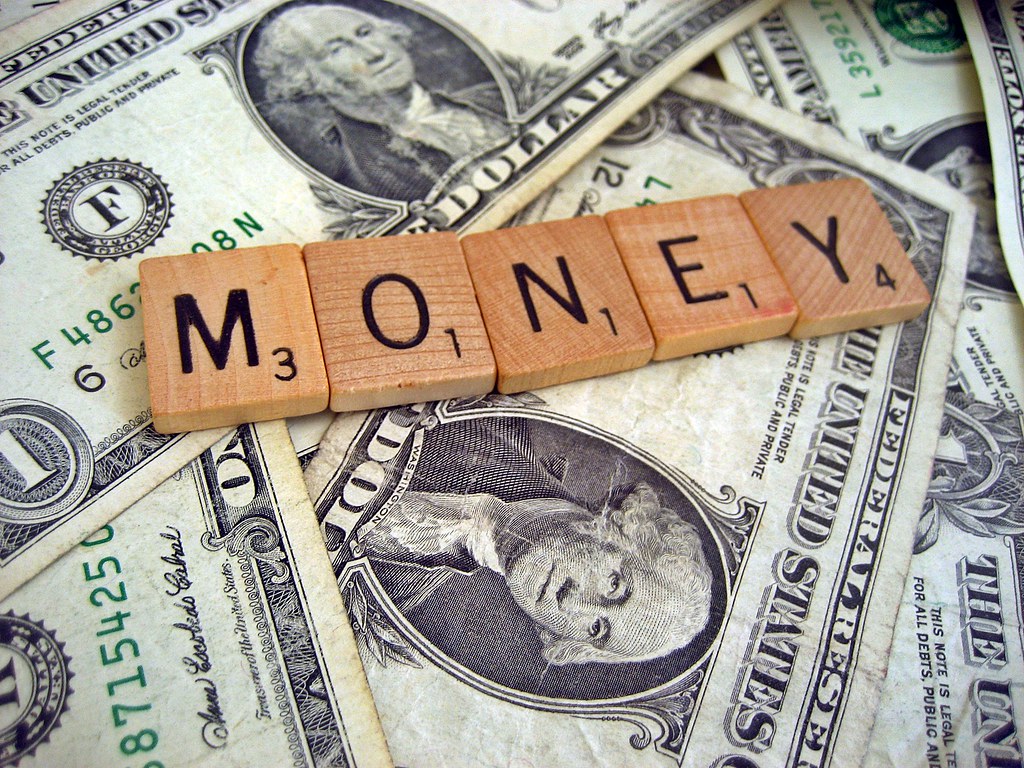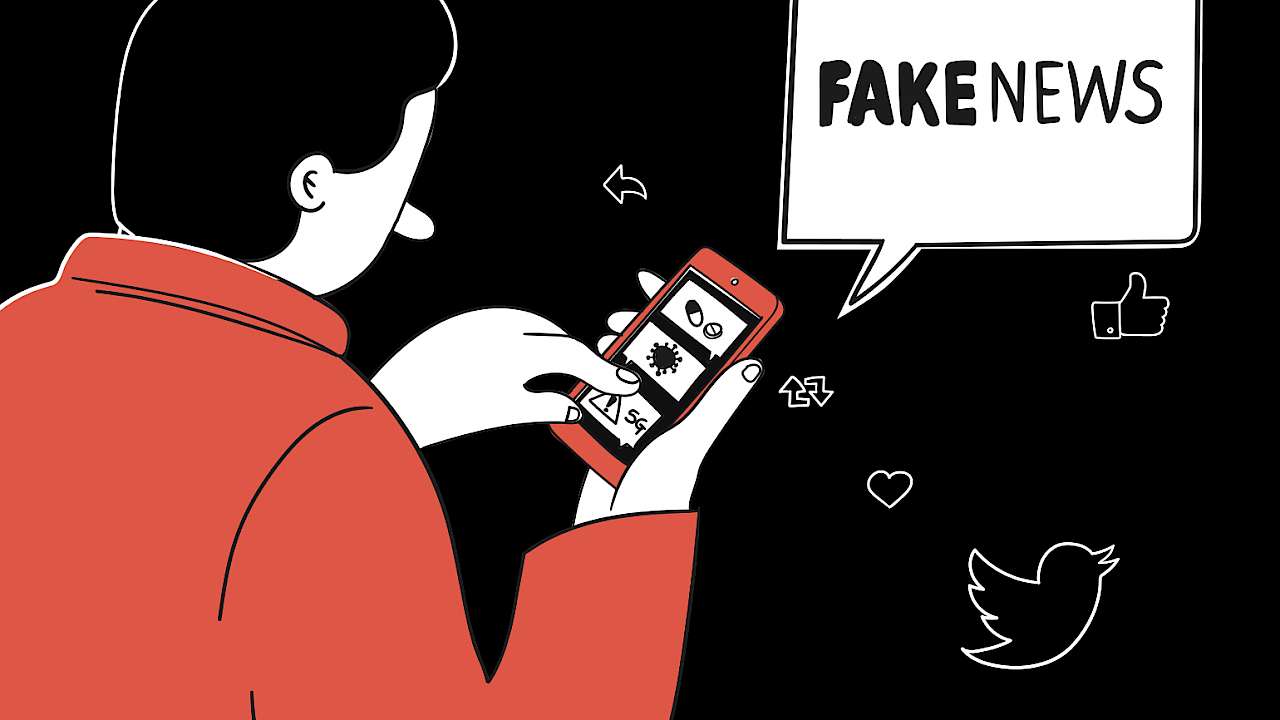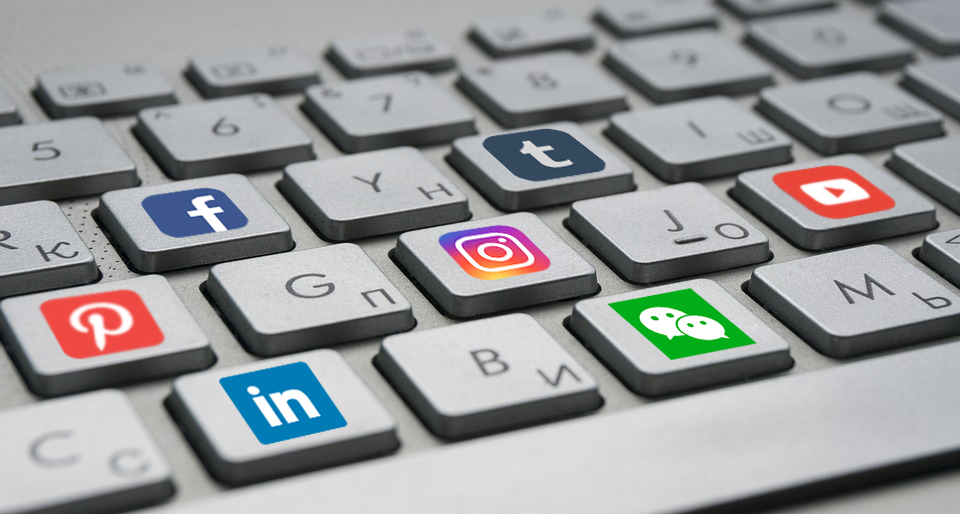
This guide will address disinformation on social media platforms and the danger these companies pose to society and democracy.
1. How do social media companies make money?
2. How do content creators make money?
3. More People than ever get their news from social media.
4. What is an algorithm?
5. Why is this problematic?
6. How is society affected?
7. What have social media companies done to protect people from disinformation on their platforms?
8. Why haven't social media companies addressed this danger to their users?
9. What do those who oppose social media regulation think?
10. What can people do to combat disinformation on their own?
Currently social media companies do not have regulations to prevent the distribution of disinformation. Platforms have moderators who view content that is reported by users and make choices whether to remove or delete someone’s content or social media account. Section 230 of the Communications decency Act of 1996 provides immunity for internet platforms which keeps them from being held liable for users’ speech. This law was written in a time when the internet was fragile and needed protection from liability. In today’s world, social media companies use algorithms that keep users in a continuous feedback loop. These companies also profit from content created by publishers on their platforms. With no differentiation between what is real and what isn’t, a one-sided view of culture and politics can wreak havoc on democracy. Social media is a main source of news for many individuals and when something is labeled as “news” there is an expectation of truth that comes with that label.
Using the SVC library’s online databases, Google Scholar and Infobase this research paper sought the reasons why regulation for social media is necessary and discovered the nuanced reasons why it has not yet been regulated. Nine articles were gathered with two debate videos as testimony for the thesis. Nearly all the articles found were in favor of social media regulation in some form. Russian elections interference, homegrown terrorism based in fear mongering and fake news, and attacks on science and medicine give ample evidence that there is some need for regulation. How to go about regulating has many scholars and legal experts stumped. Some say any removal of speech is a violation of first amendment rights, others argue that the algorithms themselves are already a form of censorship because they decide what speech users see. Overall, many agree that Section 230 is outdated and no longer applies as it once did to the digital world of today and needs to be overhauled. Social media and disinformation being unchecked could pose and might have already posed major threats to democracy.

Image Description: A scattered stack of one-dollar bills covered with scrabble letters that spell out "money".
"Money" by 401(K) 2013 is licensed under CC BY-SA 2.0.
How do social media companies make money?
Apps like Facebook and Instagram, owned by Meta, have become the main sources of communication and news for people everywhere. Social media companies like Meta are paid by selling advertising space on their platforms. “Meta reported total revenues of 34.9 billion for the 2023 fiscal year, which equates to approximately $369 million earned per day.” (Johnston)
Image Description: A podcaster with glasses sits at a radio desk with headphones on, talking into a microphone and smiling.
Photo by Kit (formerly ConvertKit) on Unsplash
How do content creators make money?
Content creators are social media users who make videos and content that gets spread to other users by likes, retweets or shares. This can range from videos of silly pets, kids being kids, videos of people acting out in public, or politics. The more likes and shares content gets, or the more followers one has on social media, social media companies will make more money on the advertising content creators are pushing out to their followers. So, content creators get paid by social media companies to bring followers to their platforms.
More People than ever get their news from social media.
The technology of modern-day cellphones makes it possible to get news as quickly as it gets reported. Rather than paying for cable and watching the news on television, people choose scrolling through their news feed on Facebook or watching Reels on Instagram. Scores of reliable news sources have found ways to engage with users on social media. In contrast, many misleading news sources and content creators have disseminated disinformation in this way.

Image Description: A close-up of a smart phone with various social media apps on the screen. Facebook Messenger shows one new notification.
"Social media" by Christiaan Colen is licensed under CC BY-SA 2.0.
What is an algorithm?
An algorithm is a series of instructions for problem solving. Social media companies use algorithms which rank and filter content to tailor user experience. They analyze social media users’ online interactions and behavior to understand their preferences and deliver modified content and give users more of what might interest them.
Image description: black background with green symbols and letters depicting computer code.
Photo by Markus Spiske on Unsplash
Why is this problematic?
At present, social media doesn’t have any regulations to prevent the distribution of disinformation. Platforms have moderators who view content that is reported by users and make choices whether to remove or delete someone’s content or social media account. Being stuck in a filter bubble created by an algorithm can cause users to be consumed by information that preys on their rational thinking. Disinformation and hate speech can cause political discourse and break down democracy.

Image Description: A cartoon person in a red jacket looks at their red phone in their right hand. There is a comic bubble pointed at the phone that says “fake news” with social media company logos swimming around in a black background.
Copyright © 2021 R. Stevens / CREST (CC BY-NC-SA).
How is society affected?
Russian Elections Interference: The internet is overwhelmed with scams and manipulation. Behind a computer screen, people can easily assume false identities, applying influence with little accountability. In 2016 it was reported that the Russian based "Internet Research Agency" (IRA) had hundreds of employees who created fake social media profiles. These employees were each tasked with making hundreds of posts per day using software applications (bots) to divide the US politically. These ads and bots took aim at the Black Lives Matter movement, targeting voters in swing states and involved spreading propaganda, discouraging black people from voting. “Twitter, Facebook, Instagram, and YouTube all found evidence of Russian interference in the 2016 U.S. elections. According to Twitter, a total of 36,746 Russian accounts produced approximately 1.4 million tweets during the elections.” (Farkas) Russian interference in elections continues to be an issue in every election since 2016.
Attack on Science & Medicine: At the height of the COVID-19 pandemic, content creators with no medical background made posts and Reels, offering explanations of how the virus spread and how to cure it with at home remedies. Dr. Anthony Fauci, the Director of the National Institute of Allergy and Infectious Diseases became a focal point for conspiracy theorists and Donald Trump loyalists most of which was reinforced by Trump and his right-wing followers on social media. Trump’s tweets of disinformation sowed doubt in the public, which led many to believe they could be cured of COVID-19 by trying different medicines like hydroxychloroquine, ivermectin, azithromycin, and remdesivir. At a time when the country was looking to him for answers, the President of the United States was creating fear and panic about the disease and vaccine hesitancy among his followers.
January 6th Insurrection: On January 6th of 2021, insurrectionists stormed the United States Capitol building in an attempt to overturn the government and to stop the counting of the electoral votes for President Biden who had won the election. This wasn’t just the result of an accumulation of disinformation during the months between the election and January 6th. The rhetoric and hate were carefully placed, well-crafted, and had been built with every one of Donald Trump's social media posts that he shared. Trump and his supporters had been circulating conspiracy videos on social media of what they said were ballots being shredded in Cobb County Georgia. The videos were investigated and found to have been videos of routine shredding of other sensitive materials containing voter information. Trump made a speech on the day of the Capitol riots and implored his base to march down Pennsylvania Avenue to stop the certification of the electoral votes, he told them, “We fight like hell and if you don't fight like hell, you're not going to have a country anymore.” (Naylor)
Image description: A bird's eye view of a pair of legs and gray shoes, standing on concrete with two sets of spray-painted blue letters spelling out the word vote with three stars under it.
Photo by Phil Scroggs on Unsplash
What have social media companies done to protect people from disinformation on their platforms? Platforms have moderators who view content that is reported by users and make choices whether to remove or delete someone’s content or social media account. Facebook at one time employed third-party fact checkers to check posts as they were posted for validity, flag them as false and add a warning label. Meta CEO, Mark Zuckerberg made an announcement on January 7th of 2025 that Facebook would no longer be fact checking.
Why haven't social media companies addressed this danger to its users? Social media companies have no incentive to address this issue. They are profiting from the popularity their platforms get from the dissemination of disinformation and as it stands, they have immunity from Section 230 of the Communications Decency Act of 1996 which states that, “No provider or user of an interactive computer service shall be treated as the publisher or speaker of any information provided by another information content provider.” (47 USC 230) Section 230 was passed in 1996 when internet platforms were fragile and needed the protection of not being held liable for users’ speech. Section 230 immunity makes sense in the context of a platform but makes less sense in the context of a publisher. When social media companies use algorithms to push information out to the public, they become publishers.
Image Description: Capitol building rotunda with American flag in the foreground.
Photo by Ian Hutchinson on Unsplash
What do those who oppose social media regulation think? Advocates of the First Amendment argue that the government applying regulations to social media companies would be akin to censorship. The First Amendment protects citizens in the United States against government censorship but doesn’t protect citizens against private companies like Facebook, Twitter and Instagram regulating hate speech or disinformation. Opponents of social media companies regulating free speech argue that the negative effects of disinformation and hate speech outweigh the negative effects of censorship. Allowing the government to decide what can be reported to the public can be a dangerous practice if the government is corrupt. It is important that if there are regulations placed on social media that there will not be government overreach.
What can be done to regulate social media? Social media companies are no longer defenseless entities that need protection. It is society and democracy which need protection from social media. To regain control of the future progress of democracy, Congress should review Section 230 and make changes to how they view social media companies. The algorithms these companies employ decide what speech users see in their content feeds. Social media companies use this tactic to boost views all for their shareholders’ benefit and are making profit from the dissemination of disinformation. For the users who view content created by others, social media is a platform. For content creators, social media is a form of publishing their material which they are paid for. Social media companies should be seen as publishers who could be held liable for the implications of their actions. Paying content creators on social platforms is promoting illusion and the future of a democratic society depends on reality.
Image Description: A large scale with the words "truth and facts" on the left side and "fake and news" on the right side, weighing it down.
Photo by Hartono Creative Studio on Unsplash
What can people do to combat disinformation on their own? In today's society it is hard to know who to trust. Even our own biases can trick us. If people want to believe something because it gives them hope or might help them, they will. This is what makes disinformation so dangerous. Self-awareness and educating what makes people's brains allow them to believe misinformation is a great start.
What Is Confirmation Bias? - YouTube
Links to help with fact checking
Fact Check Bias Chart | AllSides
According to a Pew Research Center study titled “America’s News Influencers,” nearly one in five Americans get their news from influencers on social media.” From that same report, 77% of those news influencers “have no past or present affiliation with a news media organization, while 23% have been employed in the news industry in some way.” In other words, a fifth of the US population gets their news from sources made up of people who are not qualified to create news-related content, as they have no formal background in journalism. Such an influx of information is inundating and confusing to people who lack research and fact checking skills.

"Social Media Marketing Strategy" by Today Testing (For derivative) is licensed under CC BY-SA 4.0.
| All Content CC-BY. |